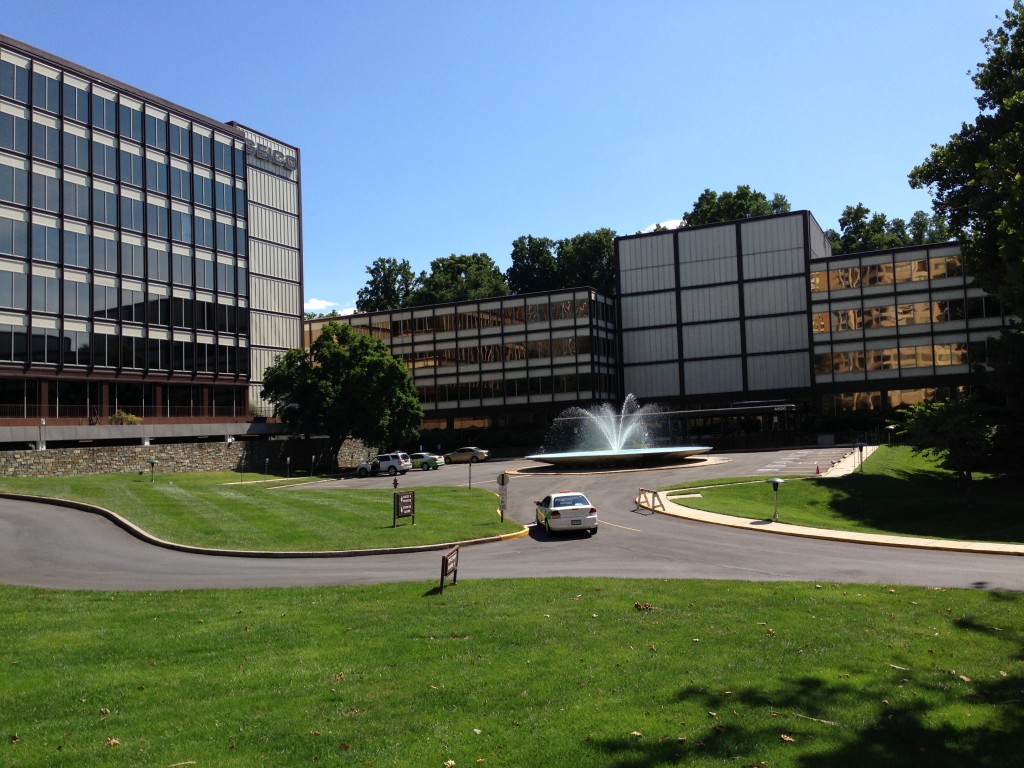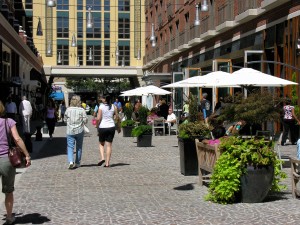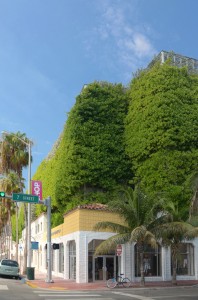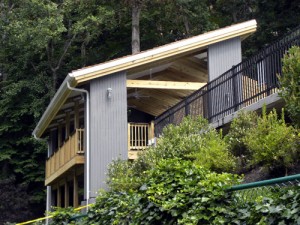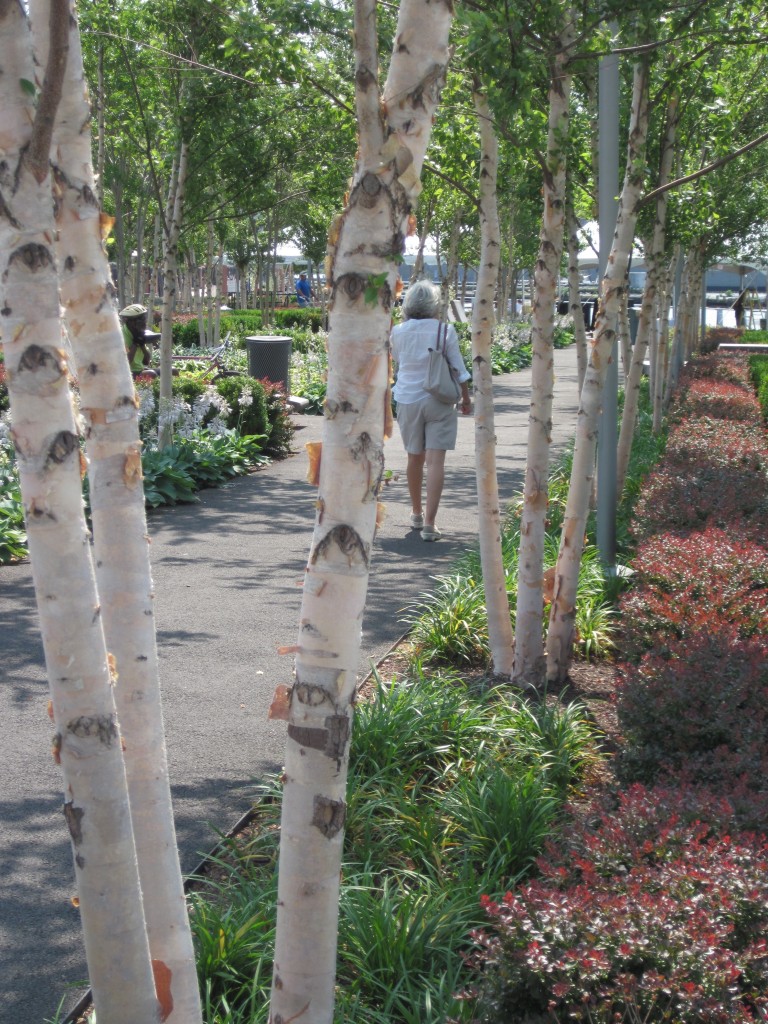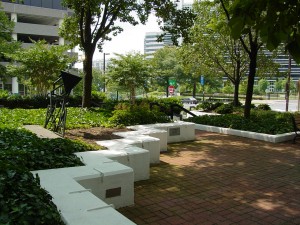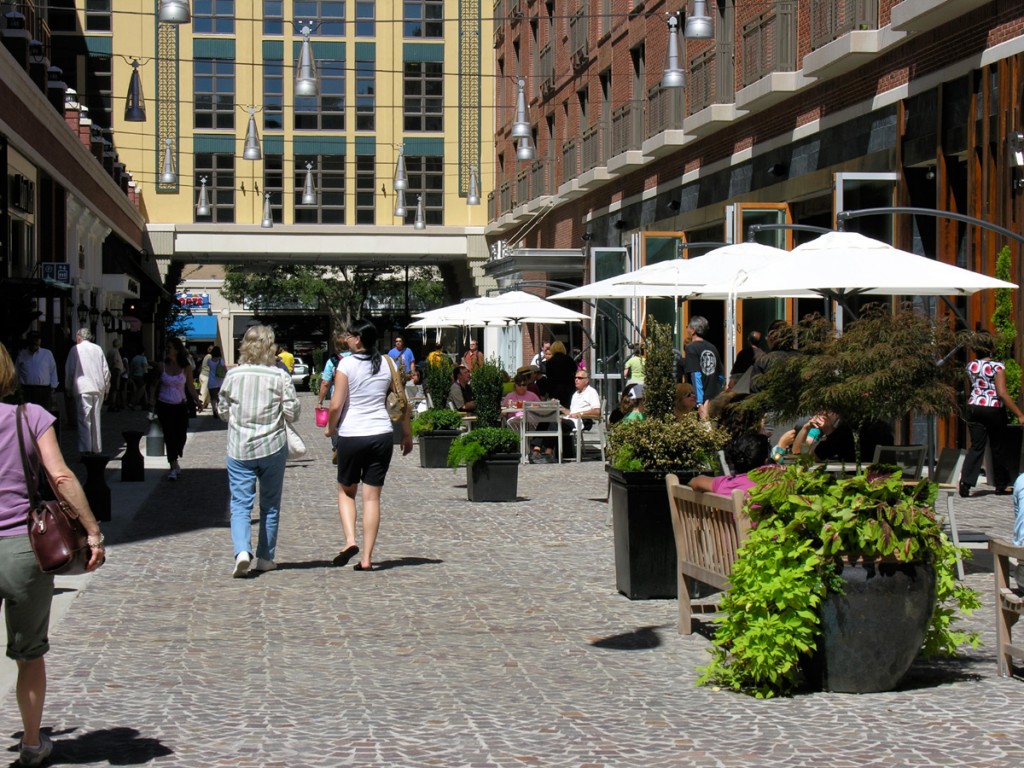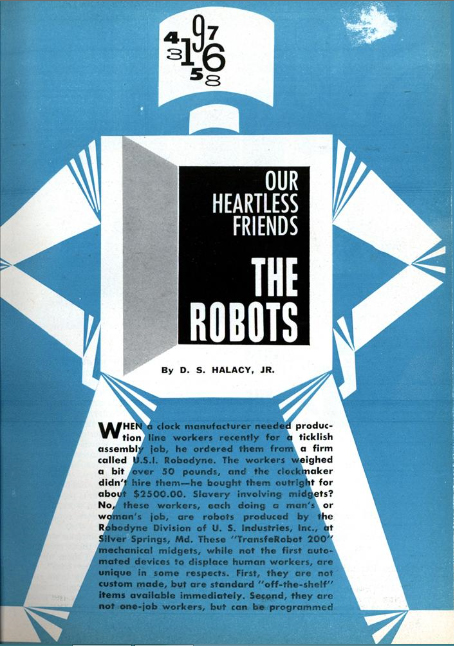
Robots in Silver Spring
Who knew? Silver Spring was home to a pioneering robot. The TransfeRobot was an early standardized, off-the-shelf programmable robot, developed in 1958 and offered for sale in 1959. U. S. Industries started making the robots at 949 Bonifant Ave (more on that later). The firm quickly outgrew that building and moved out to the new Montgomery Industrial Park.
The sleek, modern building at 12345 Columbia Pike was designed in 1960 (architect unknown) and opened for production in 1961. It was originally called the USI Automation Center, and was operated by the Robodyne Division of USI. This is the front façade of the headhouse that faces Columbia Pike.
The TransfeRobot 200 could perform adaptable, repetitive tasks that made … Continue reading
